If you’ve ever savored the delightful experience of freshly steamed bao (also known as baozi) at an authentic Asian restaurant, then you undoubtedly share our profound appreciation for these incredibly delicious and satisfying buns. Here at [Your Blog Name – assuming the context], our culinary passion knows no bounds, extending to every corner of the globe. We thrive on exploring diverse food cultures and eagerly embrace the challenge of recreating their iconic dishes in our home kitchen. Recently, during his International Cuisine term at culinary school, Mark mastered the art of bao making. This exciting development prompted us to infuse a touch of seasonal charm into our repertoire, resulting in these adorable and undeniably tasty Pumpkin Shaped Pork Steamed Buns (Bao) – a perfect addition to any autumn menu!
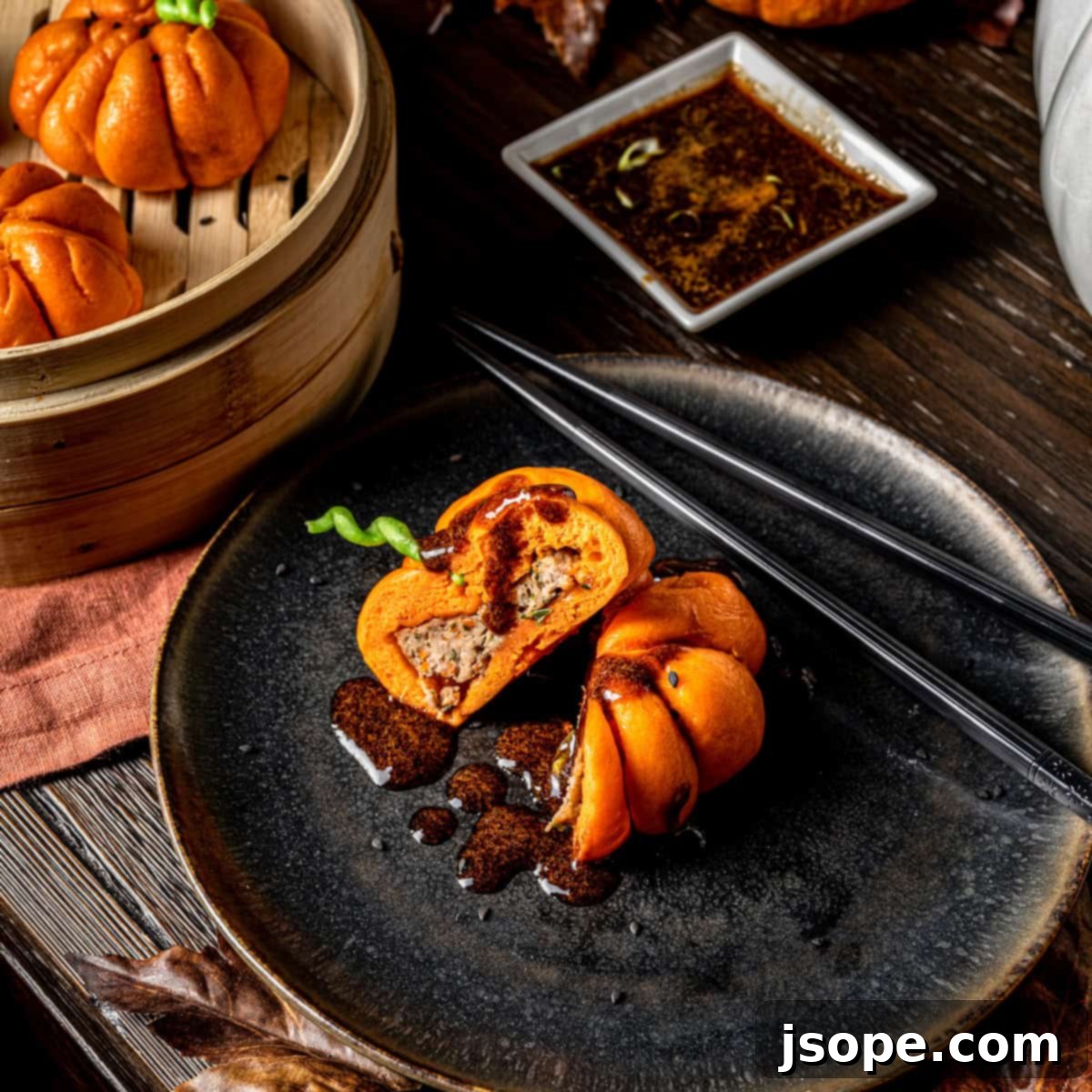
A special shout-out and heartfelt thanks go to our talented friend and fellow chef, Venessa Wilson-Watson, who collaborated with us to craft this uniquely charming pumpkin-shaped bao recipe for the blog. Her creativity and expertise were invaluable in bringing these cute culinary creations to life!
Discovering the World of Bao: A Culinary Journey
Bao, or baozi, refers to a diverse category of filled, leavened steamed buns that trace their origins back to ancient China. Our fascination with Chinese cuisine runs deep, yet we often feel we’ve merely scratched the surface when it comes to preparing its vast and rich array of classic dishes at home. These delectable steamed buns, however, have become a staple in many households and a beloved treat worldwide.
Historical accounts suggest that bao first emerged in Northern China several millennia ago. Born out of necessity and ingenuity, these buns offered a practical and nourishing way to consume grains, often filled with seasonal ingredients. From its humble beginnings, bao spread throughout China and subsequently became incredibly popular in numerous other Asian countries and beyond, each culture adapting the bun to its unique culinary traditions and preferences.
Given its widespread adoption and evolution over centuries, pinpointing a single “traditional” filling for bao would be a challenging, if not impossible, task. However, in our explorations, we’ve consistently found savory pork to be among the most common and cherished fillings for many varieties. The beauty of bao lies in its incredible versatility; almost anything can be encased within its soft, fluffy dough! Fillings are often prepared raw, then cooked to perfection as the bao steams, though some recipes utilize pre-cooked ingredients. Whether it’s a rich mixture of meats, a vibrant medley of vegetables, or even a decadent sweet filling, bao offers a delightful canvas for countless culinary creations. Common savory variations include finely chopped pork with napa cabbage, shiitake mushrooms, or various robust seasonings, while sweet versions might feature red bean paste, lotus seed paste, or even custard.
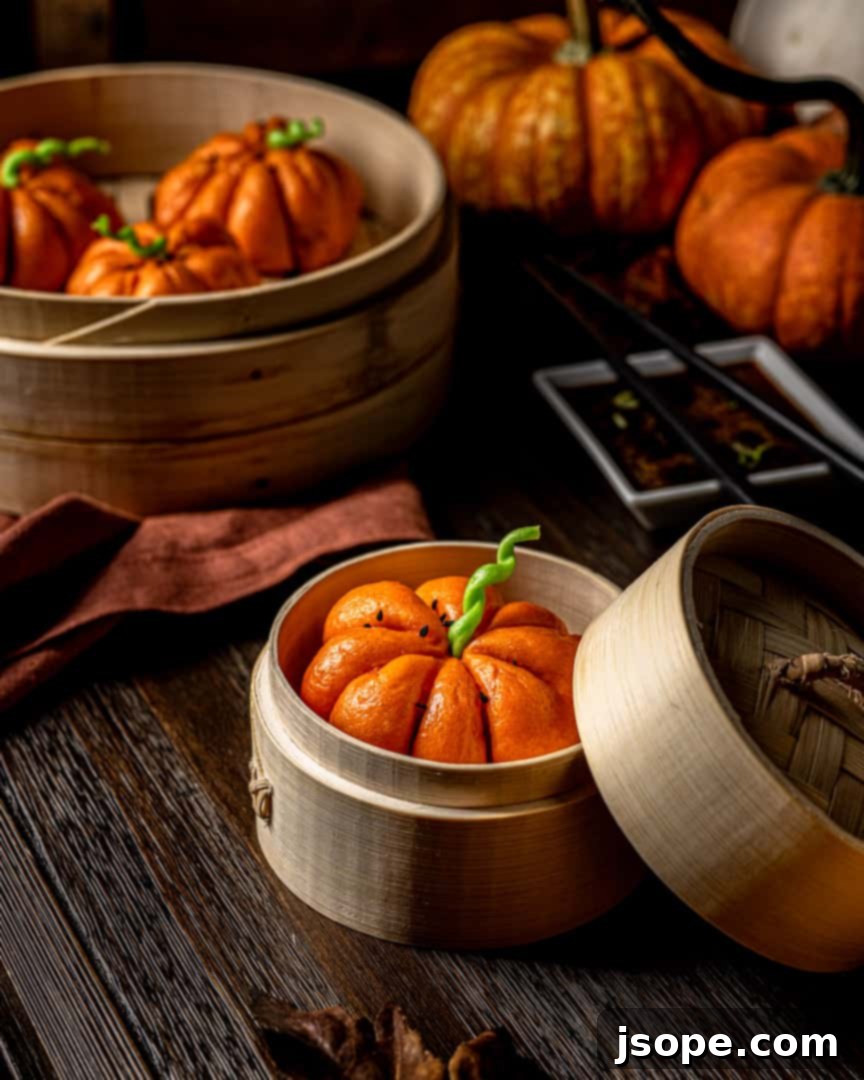
Today, Northern China is just one of many homes to bao. Indeed, various regions across China, alongside countries such as Japan (where it’s known as Nikuman or Anman), Thailand (Salapao), the Philippines (Siopao), Malaysia (Pau), Indonesia (Bakpao), and countless others, have embraced and skillfully adapted bao, often giving it a localized name. Despite these regional variations, “bao” and “baozi” remain the most globally recognized terms of Chinese origin. The fundamental preparation typically involves encasing a delicious filling within a soft, slightly sweet, and perfectly leavened dough, followed by steaming to achieve its characteristic tender texture.
Through recipes like this one, or others inspired by global cuisines, our primary objective is to share delectable content that not only brings joy to our kitchen but also introduces you to diverse culinary traditions you might not have considered making at home, yet have always been curious to explore. We wholeheartedly encourage you to broaden your horizons further by seeking out food bloggers and culinary experts from the cultures where these recipes originated. Their authentic insights and deep-rooted knowledge offer invaluable perspectives and truly allow you to immerse yourself in the rich tapestry of global gastronomy. This commitment to cultural appreciation and deeper understanding is precisely what guides us whenever we embark on a new culinary adventure!
For those seeking truly authentic and traditional Chinese recipes, we highly recommend exploring resources from experts deeply embedded in the culture, such as The Woks of Life.
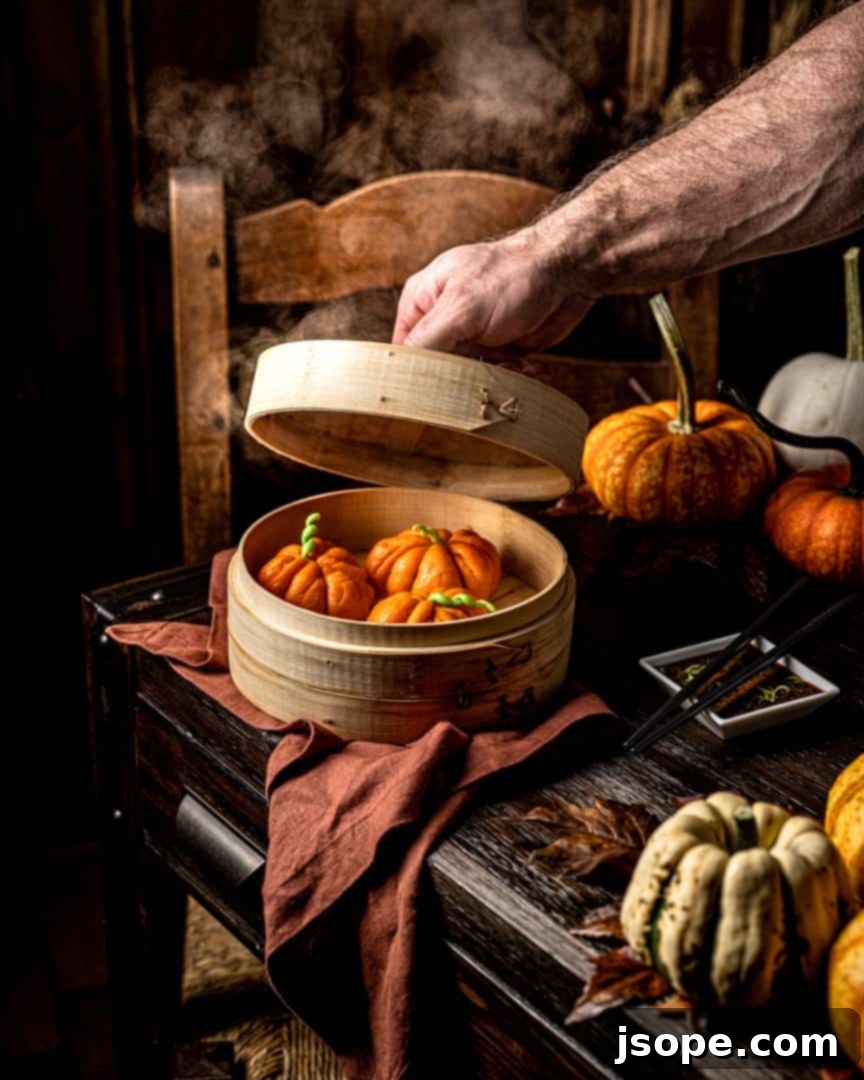
Crafting Our Whimsical Pumpkin Shaped Bao
Our particular rendition of bao, featured in this recipe, embraces a decidedly whimsical and non-traditional aesthetic. While they may not boast the classic pleats of a conventional bao, these pumpkin-shaped steamed buns are undeniably charming, perfectly seasonal, and, most importantly, incredibly delicious. The visual appeal of these festive buns makes them a delightful centerpiece for autumn gatherings or a fun, family-friendly project.
For the filling, we opt for a raw pork mixture, which is a common and highly effective technique in bao preparation. This raw filling cooks simultaneously as the bao steams, a process we’ve found to yield an exceptionally tender and juicy interior. The steaming time required to perfectly cook the ground pork mixture aligns beautifully with the time it takes for the dough to become wonderfully fluffy and cooked through. This synchronized cooking method prevents the filling from drying out, resulting in an amazing taste and a superior, succulent texture that truly elevates these Pumpkin Shaped Pork Steamed Buns.
Mastering the Art of Coloring and Shaping Your Pumpkin Baozi
The intricate pleating often associated with traditional bao is an art form that truly takes practice to perfect. Thankfully, for this specific pumpkin-shaped bao recipe, those precise pleats are less critical. Your primary goal here is simply to securely seal the flavorful filling within the dough and then, of course, to skillfully tie the strings around each bun to create that distinct, charming pumpkin silhouette. For those interested in learning more about traditional bao shaping techniques, resources like Red House Spice offer excellent guidance. However, the dough itself in our recipe is quite forgiving and straightforward to prepare. If you have any prior experience with homemade bread or yeast-based doughs, you’ll likely find this recipe both accessible and enjoyable to follow.
While we chose to vibrant orange food coloring to achieve a realistic pumpkin hue, you certainly have the option to leave the dough its natural, pristine white for a more classic look. Alternatively, for a natural approach, you could experiment with vegetable-based dyes such as a tiny amount of spinach juice for green or carrot juice for a subtle orange tint, though store-bought food coloring offers the most consistent and vibrant results.

To infuse our steamed buns with their characteristic pumpkin colors, we meticulously divide the prepared dough into two distinct portions: a smaller amount designated for the green stems and vines, and the larger portion reserved for the orange pumpkins. For the stems, simply pinch off a small piece of dough, roughly smaller than a golf ball, and dye it green. The remaining, larger portion of dough will then be colored a vibrant orange. The contrast in colors truly brings these edible pumpkins to life!
Achieving the signature pumpkin shape is a clever trick involving oil-soaked kitchen twine. After filling each bun, we gently wrap and tie the raw dough balls, much like wrapping a small present. Here’s how to do it: First, take a length of oil-soaked kitchen twine (this prevents sticking during steaming) and place your filled dough ball directly in its center. Then, carefully wrap the strings somewhat loosely around the ball about three times, ensuring you cross them each time you reach the top or bottom of the bun. This technique will naturally create six distinct segments of dough. As the buns expand during the steaming process, these segments will puff up, forming charming grooves that mimic the natural ridges of a pumpkin. The loose tying is crucial, allowing the dough ample space to rise and achieve its beautiful, rounded form without being constricted.
Once your Pumpkin Shaped Pork Steamed Buns (Bao) have finished steaming and are perfectly cooked, you’ll simply snip and remove the kitchen twine. The gentle indentations created by the strings will remain, leaving you with perfectly shaped, delightful little pumpkins ready to be admired and devoured. These make for a fantastic visual treat, especially during the autumn season!
The Art of Steaming: Perfecting Your Bao
For an optimal steaming experience and consistently light, fluffy buns, we enthusiastically recommend investing in a good bamboo steaming basket. Bamboo steamers are renowned for their ability to evenly distribute heat and absorb excess moisture, preventing condensation from dripping onto your buns and making them soggy. This results in a superior texture. However, if a bamboo steamer isn’t readily available, a standard metal steamer basket placed inside a large pot with a tightly fitting lid will also work effectively. Regardless of the type of steamer you use, a critical step is ensuring the buns are not touching each other during the cooking process. Overcrowding can lead to uneven cooking and sticking. Depending on the size of your steaming basket, you may need to steam these delicious Pumpkin Shaped Pork Steamed Buns in multiple batches to guarantee each bun has adequate space to expand and cook perfectly.
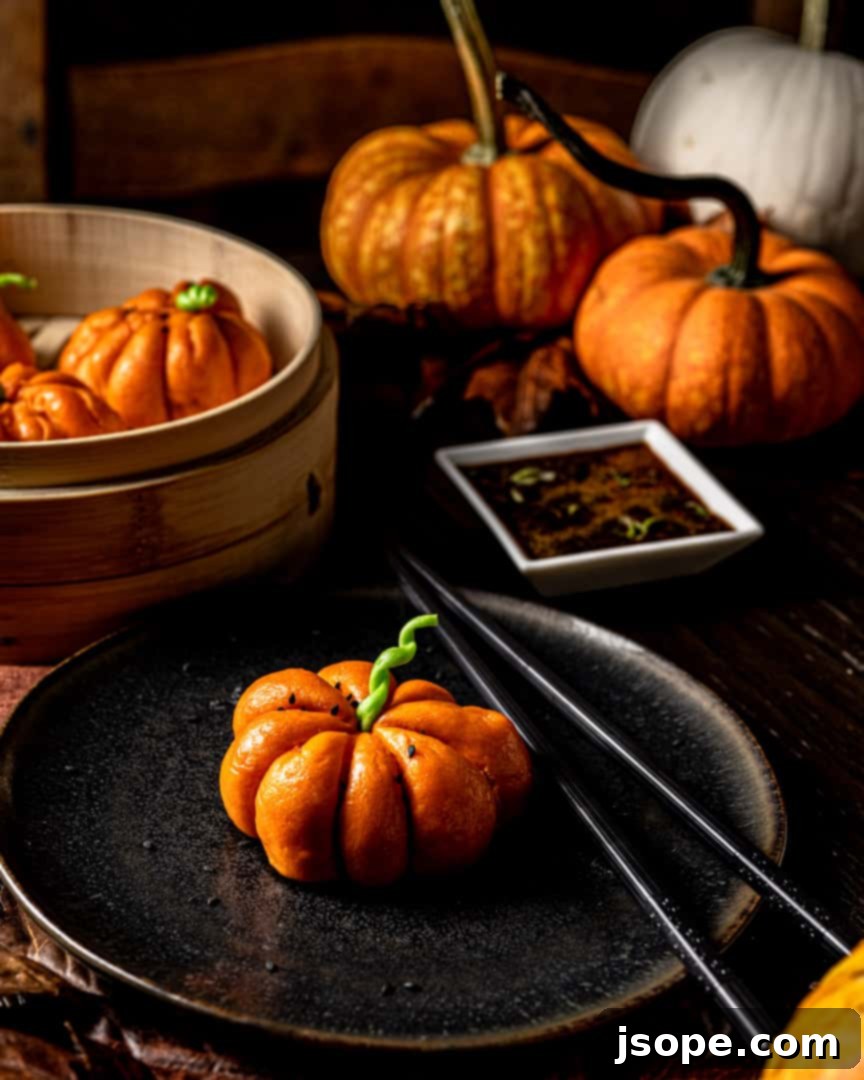
Savor Your Homemade Pumpkin Bao!
We genuinely hope you find immense joy and satisfaction in preparing and tasting this unique recipe for Pumpkin Shaped Pork Steamed Buns (Bao)! It’s a wonderful way to bring a touch of creativity and global flavor into your kitchen. Should you decide to embark on this culinary adventure, we’d be absolutely thrilled to hear about your experience. Please don’t hesitate to leave us a comment below sharing your thoughts, or better yet, tag us on Instagram @cooking_with_wine so we can see your beautiful creations!
If you thoroughly enjoyed crafting and tasting these seasonal steamed buns, we invite you to explore more of our festive and delicious recipes below:
- Pumpkin Ravioli with Parmesan Sage Cream Sauce
- Spiced Carrot Ginger and Fennel Soup
- Veal and Beef Shepherd’s Pie
- Pumpkin and Roasted Red Pepper Soup
- Pork and Shiitake Mushroom Ragù
📖 Recipe: Pumpkin Shaped Pork Steamed Buns (Bao)
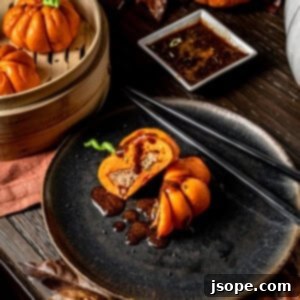
Pumpkin Shaped Pork Steamed Buns (Bao)
Who can resist a savory pork filling encased in a fluffy steamed bun, charmingly shaped like a pumpkin? Dive into this festive and delicious Pumpkin Shaped Pork Steamed Buns (Bao) recipe!
Prep Time: 30 mins
Cook Time: 12 mins
Total Time: 2 hrs 42 mins
Course: Appetizers
Cuisine: Chinese-Inspired
Servings: 14 buns
Calories: 298 kcal
Ingredients
Dough
- ½ oz sugar
- 2 oz warm water (105°F)
- ¼ oz active dry yeast
- 16 oz all purpose Flour
- 1 oz vegetable shortening
- 4 oz sugar
- 8 oz warm whole milk (105°F)
- ½ oz vegetable oil
- 1 tablespoon baking powder mixed with ¾ oz water
- ⅛ teaspoon orange food coloring for pumpkins
- a few drops green food coloring for stems/vines
Pork Filling
- 1 lb pork (ground or minced) (454g)
- 2 tablespoon + 1 teaspoon Low Sodium Soy Sauce (35g/37ml)
- 2 tablespoon Oyster Sauce (28g/30ml)
- 1 teaspoon Chinese Five Spice (4g)
- 1 teaspoon Salt
- 2 whole Green Onion (fine sliced) (50g)
- ¼ cup Onion (super fine chop) (15g)
- ½ cup Carrots (super fine chop) (30g)
- ½ tablespoon Ginger (minced) (8g)
- ½ tablespoon Parsley (super fine chop) (8g)
Dipping Sauce
- ½ cup Light Soy Sauce (64g/118ml)
- ½ cup Rice Wine Vinegar (64g/118ml)
- 2 tablespoon Lemon Juice (28g/30ml)
- 1 teaspoon grated ginger
- 3 cloves garlic, minced
- 2 teaspoon Sesame Oil (10ml)
- 1 teaspoon crushed Red pepper flakes or Fresh chiles such as jalapeño, serrano, or Thai “bird” chiles (3-5g)
Garnish
- 1 tablespoon green onion tops – thinly sliced – added to dipping sauce when served
- Sprinkling of black sesame seeds
Additional Kitchen Items Needed
- 14-16 pieces of kitchen twine (each approx 14-18 inches long) soaked in ½ cup neutral oil for tying the pumpkins
- 14-16 toothpicks, lightly rubbed with neutral oil
- 14-16 3×3 inch squares of parchment paper
- bamboo steamer basket or other steamer basket and large pot with lid
Instructions
Dough
- Dissolve the ½ oz of sugar in the warm water. Sprinkle the yeast over the water and let it stand for a few minutes, then stir. Let the mixture sit in a warm space for 10 minutes until the yeast begins to bloom (foam). Meanwhile, put the flour on a clean work surface and make a well in the center. Put the shortening, sugar, milk and yeast mixture in the well and start to stir to combine with the flour, gradually incorporating the flour. Knead the dough for 10 minutes – adding a little flour as needed if the dough is too sticky. Alternatively you can use a stand mixer with a dough hook and mix until the dough is smooth.
- Oil a bowl and place the dough in the bowl, oiling the dough ball as well. Cover with plastic wrap and let rest in a warm place for 90 minutes or until the dough has doubled in size. If you didn’t make the filling and dipping sauce in advance, make it while the dough rests.
- Remove the dough from the bowl and place on a clean work surface. Punch the dough down and flatten it to ¾ inch. Spread the baking powder/water mixture evenly on top of the flattened dough, then pinch off a small golf ball size piece and set aside.
- Place the dough back in two separate bowls. Add the orange food coloring to the larger segment of dough and the green food coloring to the smaller segment of dough, then fold the dough over several times and begin to knead the dough. (Using a bowl for this step instead of kneading on a flat surface will prevent the dye from staining your countertops.)
- Knead for about 10-15 minutes until firm and smooth. Cover, and let rest for 30 more minutes.
- Remove the dough from the bowl and begin making the bao.
Pork Filling
- Mix all ingredients together thoroughly and place in an air tight bag or container. Marinate for a minimum of 1 hour, but preferably overnight.
Dipping Sauce
- Mix all of the ingredients well and let sit for at least a couple of hours (or overnight) in an airtight container in the refrigerator.
Fill and Shape Pumpkins
- Divide the orange dough into 14-16 balls similar in size. On a lightly floured work surface, roll each ball out into circles about 4-4.5 inch diameter.
- Place about 2 tablespoon of pork filling in the middle of the circle and bring the edges together to make a ball surrounding the filling (traditional pleating of the bao is not necessary here).
- Tie each ball loosely with the kitchen twine like a present, by wrapping the twine around the dough ball 3 times to create 6 segments, then tie a double knot at the top. The dough will expand as it steams to create the pumpkin shape, so do not tie the bao too tight – the indentions make themselves.
- Make the stems with the green dough by pinching small balls from the dough and rolling them into small ropes about 3 inches long. Wrap each green dough rope around a toothpick.
Steaming the pumpkin shaped buns
- Fill a pot with about 2 inches of water making sure that the water is below your steamer basket and will not touch the buns throughout the steaming process.
- Place your steamer basket into the pot, then place each bun on a piece of parchment paper and into the steamer basket. It is important that the buns are not touching each other, so you may need to cook these in several batches. Place your stems flat in the steamer basket along with the buns, before the buns or after the buns, but the stems take only 50% of the cooking time that the bao take (6-7 minutes). This will be according to how much room you have, but doing the stems ahead of time is what we prefer. Steam the bao for 12-14 minutes (depending on the size of your buns), with the lid on.
- Once done, remove from the steamer and cut and remove the twine. Remove the stems from the toothpicks and use the toothpick to puncture a small hole in the top of the bun for your stem. Insert the stem for presentation and make it look the way you wish.
- Serve with the dipping sauce with the sliced green onions added to the sauce and black sesame seeds sprinkled on the bao.
Nutrition
Calories: 298kcal
Carbohydrates: 37g
Protein: 11g
Fat: 11g
Saturated Fat: 4g
Polyunsaturated Fat: 2g
Monounsaturated Fat: 5g
Trans Fat: 0.3g
Cholesterol: 25mg
Sodium: 871mg
Potassium: 219mg
Fiber: 1g
Sugar: 11g
Vitamin A: 853IU
Vitamin C: 2mg
Calcium: 90mg
Iron: 2mg
Keyword: bao, ground pork, steamed buns, baozi, pumpkin bao, fall recipe, Chinese-inspired steamed buns
Tried this recipe? Let us know how it was!
